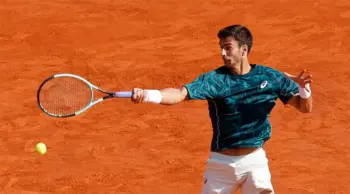Betting on tennis at online bookmakers is a great way to add excitement when watching a match, however, it requires some strategy. Without proper bankroll management, you can find yourself in trouble easily. Your bankroll, the money you set aside specifically for betting, is your lifeline in this game. Managing it better, ensures you can handle losses and capitalise on wins in a completely different way.
Here’s a small guide with a few useful tips and strategies to help you manage your bankroll when betting on tennis matches.
Why Bankroll Management Matters
Tennis betting is unpredictable. A top seed can fall to an underdog, a match can swing wildly due to a single break of serve or an injury can change your carefully researched bet. Without a solid bankroll management plan, emotional decisions (like chasing losses or over-betting on a “sure thing”) can quickly drain your funds. Proper management keeps you disciplined, reduces stress and allows you to bet strategically over the long term. It’s not easy to keep up though, and it will take some discipline.
Step 1: Set a Dedicated Betting Bankroll
Before placing a single wager, decide how much money you’re willing to allocate to tennis betting. This should be an amount you can afford to lose without impacting your daily life, think of it as an entertainment budget, not an investment. For example, if you’re comfortable with $500, that’s your bankroll. Don’t dip into savings or other funds to add on to it; once it’s gone, take a break and reassess.
One option to increase the starting budget is to use one of the many welcome bonuses available at sportsbooks nowadays. Typically a bonus- or promo code is needed to claim the additional funds at popular sportsbooks such as DraftKings. Remember to check the terms for bonuses though as it’s usually some requirements before a player can cash out.
Step 2: Use the Unit System
One of the most effective strategies for managing your bankroll is the unit system. A “unit” is a fixed percentage of your total bankroll, typically 1-5%, depending on your risk tolerance. So, for a $500 bankroll…
- Conservative (1%): $5 per bet
- Moderate (2%): $10 per bet
- Aggressive (5%): $25 per bet
Stick to your unit size for every wager, regardless of how confident you feel about it (yes, this is tough). This prevents you from over-betting when you’re on a winning streak or doubling down after a loss. For tennis especially, where upsets are common, a conservative approach usually works best.
Step 3: Adjust for Unique Volatility in Tennis
Tennis betting offers a variety of markets, match winner, set betting, handicap betting, over/under games, and props like total aces, all with different risks. To state the obvious, betting on a heavy favorite like Alcaraz might seem safe but offers low returns, while a long-shot underdog on clay could yield a big payout but is riskier. Arrange your unit size to the bet type:
- Low-risk bets: Stick to your standard unit.
- High-risk bets: Reduce to half a unit or skip entirely if it doesn’t fit your strategy.
Tip 1: Avoid Chasing Losses
After a tough losing bet, like picking a player who retires mid-match, it’s tempting to place a bigger wager to recover quickly. This is common, but really a bankroll killer. Stick to your unit size and trust that the busy schedule of tennis gives you plenty of chances to get back.
Tip 2: Spread Your Bets Across Matches
Tennis offers daily action, especially during Grand Slams or Masters 1000 events. Instead of putting your entire day’s budget on one match, diversify. You can for example use a $10 unit size and a $50 daily limit, bet on five different matches. This spreads risk and increases your chances of a positive outcome.

Tip 3: Track Your Bets
Keep a simple record of every wager: date, match, bet type, stake, odds and result. This might seem excessive but it helps you spot patterns, maybe you’re great at picking clay court winners but struggle with grass court props. Use a spreadsheet or app to calculate your win rate and adjust your strategy. If you’re consistently losing on certain bets, cut them out.
Strategy: The Flat Betting Approach
Flat betting means wagering the same unit size on every bet, regardless of odds or confidence. For tennis, this is a reliable way to stay disciplined. Say you’re betting $10 per match. Whether it’s a -200 favorite or a +300 underdog, your stake stays $10. This prevents you from overcommitting on “locks” that might not work out.
Strategy: The Kelly Criterion (For more advanced bettors)
If you’re comfortable with math, the Kelly Criterion can optimize your stakes based on perceived value. The formula is:
- Stake = [Bankroll × (Odds × Win Probability – 1)] ÷ (Odds – 1)
For example, if you think a player at +150 (2.50 decimal odds) has a 50% chance of winning, and your bankroll is $500:
- Stake = [$500 × (2.50 × 0.5 – 1)] ÷ (2.50 – 1) = [$500 × 0.25] ÷ 1.5 = $83.33
This is aggressive, so many bettors use a “half-Kelly” (e.g., $41.67) to reduce risk. It’s great for tennis value bets but requires accurate win probability estimates.
Tip 4: Take Advantage of Sportsbook Promotions
As mentioned earlier, online sportsbooks often offer bonuses like free bets or deposit matches. Use these to increase your bankroll without risking more of your own money.
Tip 5: Know When to Walk Away
Set win and loss limits. If your $500 bankroll drops to $400 (a 20% loss), take a break to avoid a spiral. Similarly, if you hit $600 (a 20% gain), consider pausing to lock in profits. Try to view tennis betting as a long marathon and preserve your bankroll for the next big tournament.
Hope some of these tips will help. Managing your bankroll for tennis betting isn’t about guaranteeing wins, it’s about staying in the game long enough to enjoy it and (hopefully) profit over time.















